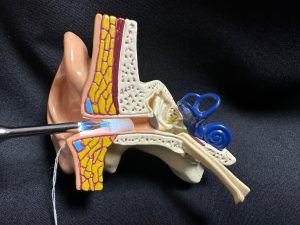Eustachian Tube
Understanding the Eustachian Tube: Function, Health, and Common Disorders Explained
The Eustachian tube is a narrow channel connecting the middle ear to the upper throat and the back of the nasal cavity. It plays a critical role in maintaining equal air pressure on both sides of the eardrum, which is essential for proper hearing. The Eustachian tube also allows drainage of normal secretions from the middle ear into the nasopharynx, the area behind the nose.

Structure and Function
The Eustachian tube is approximately 35-38 millimeters (about 1.5 inches) in length in adults and is lined with mucous membrane. One end of the tube opens into the middle ear, while the other end, which opens and closes to regulate air pressure and drainage, is located at the back of the throat.
Under normal circumstances, the Eustachian tube is closed but opens during swallowing, yawning, or chewing. This opening action equalizes the air pressure in the middle ear with the atmospheric pressure outside the body, facilitating efficient sound transmission and preventing damage to the eardrum and other parts of the ear.
Importance in Auditory Health
The Eustachian tube’s ability to equalize pressure is vital for:
- Hearing: Proper pressure balance ensures that the eardrum vibrates optimally in response to sound.
- Protection: It protects the inner ear from nasopharyngeal sound pressures and secretions, which could otherwise damage the ear structures.
- Drainage: It allows fluid to drain from the middle ear. If the tube is dysfunctional, fluid can build up, leading to conditions like otitis media with effusion (fluid in the ear).
Common Problems and Conditions
Problems with the Eustachian tube can lead to several ear-related conditions:
- Eustachian Tube Dysfunction (ETD): This occurs when the tube fails to open properly, leading to symptoms like muffled hearing, a feeling of ear fullness, ear pain, and tinnitus. ETD can be caused by allergies, colds, sinus infections, or even changes in air pressure from activities like flying or diving.
- Barotrauma: Discomfort and possible damage to the ear caused by rapid changes in pressure, commonly experienced during airplane takeoff and landing or when scuba diving.
- Infections: If the tube is blocked, it can lead to accumulation of fluids and an increased risk of infections in the middle ear.
Treatment and Management
Treatment for Eustachian tube-related problems depends on the cause and severity of the condition but may include:
- Decongestants and Nasal Steroids: These can help reduce nasal congestion and inflammation, aiding the Eustachian tube in functioning properly.
- Autoinflation: Blowing gently with the nostrils pinched and mouth closed (as if blowing up a balloon) can help open the Eustachian tubes.
- Surgical Options: In chronic or severe cases, procedures such as balloon dilation of the Eustachian tube or the insertion of tubes in the ear may be necessary to improve function and drainage.
Conclusion
The Eustachian tube is an essential yet often overlooked component of the auditory system, critical for maintaining ear health and proper hearing function. Understanding its role and how to manage its related disorders can help prevent more severe auditory complications. Proper care and management, especially during upper respiratory infections or when experiencing rapid altitude changes, are crucial for maintaining its health and functionality.
